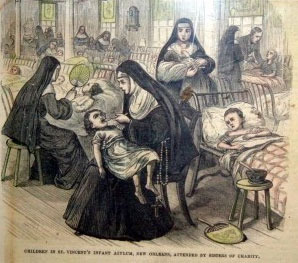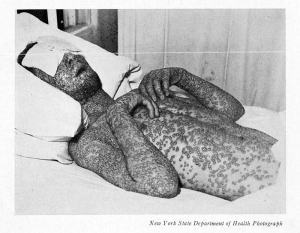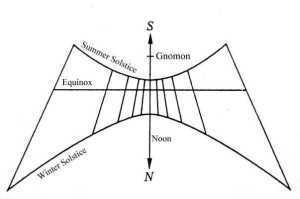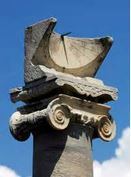Rose Anderson's Blog, page 33
April 30, 2014
The A to Z Challenge – Z for “Z” the Lost City
 The LAST DAY in the A to Z Challenge! Hello and welcome to my Main blog. My name is Rose Anderson and I’m a romance novelist. All month long 2279 other bloggers and I have been blogging the alphabet. I hope you’ve enjoyed my daily topics.
The LAST DAY in the A to Z Challenge! Hello and welcome to my Main blog. My name is Rose Anderson and I’m a romance novelist. All month long 2279 other bloggers and I have been blogging the alphabet. I hope you’ve enjoyed my daily topics.
*FREE* If you enjoy reading scorching romances with unique twists and characters full of personality and depth, scroll down for a free chapter sampler. Find my book trailers in the tabs above.
۞>>>>۞<<<<۞>>>>۞<<<<۞>>>>۞
 Today’s Calliope’s Writing Tablet post is brought to you by the letter Z ~
Today’s Calliope’s Writing Tablet post is brought to you by the letter Z ~
Z for “Z” the lost city
History has always been an interest of mine. There’s just something about looking back to see from whence we came. There’s a span between then and now, one filled with alternate paths that were never taken. The forks in the road and the choices around them are often mysterious, often perplexing, and often had no thought behind them other than the road looked smoother going in one direction than the other. I’m referring to those points of decision that could have given completely different outcomes to the future.
There’s no doubt if Hitler had choked on a strudel this would be a completely different world. If Ronald Regan hadn’t taken Jimmy Carter’s solar panels off the White House to make a statement on behalf of big coal and oil, would we be watching the world’s ice caps melt today or would we be powering our electric needs like Germany does? Now put those two together and see what you get. Did a crazy Hitler (and then a scary Russia) influence the mindset over there? Is that why they are open to other possibilities like solar power while we’re stuck with robber barons who strip mine and frack?
Like I said, points of decision that could have given completely different outcomes to the future. Take the Spanish and Portuguese Conquistadors. What if they had never landed on the new world? Or here’s a mind-bender…what if they did, but were on a Star Trek-like mission to learn instead of conquer, plunder, and subjugate? As an author my mind just flies with the thought.
Those conquering mercenaries came upon [image error]golden cities the likes of which we can only imagine. And they promptly tore them apart and melted them down. If you own gold today, say a wedding band, odds are it contains some of this plundered Aztec gold.
Beyond the actual golden cities lay rumors of others hidden in the jungle. The legendary [image error]city of El Dorado had so much gold, it was said the king powdered himself with gold dust. Natives were tortured for information, maps were made, legends scrutinized, and centuries of explorers went deeper into the Amazon’s jungles.
The 20th century had one such explorer — Colonel Percy Fawcett of Britain’s Royal Geographical Society, and his last venture into the Amazon basin ended in mystery.
I’ve read that Percy Fawcett might have influenced [image error]Hollywood’s composite adventurer-archaeologist Indiana Jones. Indeed, it’s said Fawcett’s early adventures inspired Sir Arthur Conan Doyle to write The Lost World, and H. Rider Haggard to write King Solomon’s Mines.
Known for his unflagging stamina, Percy Fawcett began his Amazonian explorations in 1906 and soon became the foremost authority on the Amazon basin. Mainly exploring the Mato Grosso region of Brazil, Fawcett made seven expeditions between 1906 and 1924. He wrote everything down every step of the way. For years his adventurous exploits wowed and delighted in the newspapers back home. Because he posted regular updates, he traveled with a slew of message runners who retraced their steps to be sure the next post got out. These posts carried coded coordinates for his wife so only she might know just where in the jungle he was. You wouldn’t want other explorers making discoveries by tracing your path through the jungle.
 I imagine readers gobbling up the details as he presented them. He wrote of the 60-foot anaconda he had to shoot. He mentioned jaguars and pumas, pit vipers, tarantulas, scorpions and other poisonous things. He encountered biting flies, gnats and mosquitoes, and saw vampire bats that sucked blood from animals as well as from sleeping people. As for hostile natives, one account has his expedition in a hail of poisoned arrows and he fought back with an accordion. Music was played, tempers were smoothed, and Fawcett had new friends among the natives. How do you not love that? :)
I imagine readers gobbling up the details as he presented them. He wrote of the 60-foot anaconda he had to shoot. He mentioned jaguars and pumas, pit vipers, tarantulas, scorpions and other poisonous things. He encountered biting flies, gnats and mosquitoes, and saw vampire bats that sucked blood from animals as well as from sleeping people. As for hostile natives, one account has his expedition in a hail of poisoned arrows and he fought back with an accordion. Music was played, tempers were smoothed, and Fawcett had new friends among the natives. How do you not love that? :)
It wasn’t long before rumor and legend seized  him and he too became obsessed with finding a lost city in the Mato Grosso region — a city he was certain would be covered in gold like the ancient cities of the Aztecs and Incas. It would be the greatest discovery in South America since the Spanish and Portuguese landed on those pristine shores centuries before. He named the lost city Z.
him and he too became obsessed with finding a lost city in the Mato Grosso region — a city he was certain would be covered in gold like the ancient cities of the Aztecs and Incas. It would be the greatest discovery in South America since the Spanish and Portuguese landed on those pristine shores centuries before. He named the lost city Z.
According to his notes, Fawcett determined Z to be 11,000 years old and thought it might be one of the Seven Cities of Cibola mentioned by Spanish conquistador Francisco Vásquez de Coronado. Stretching further, he hypothesized that Z might even be the capital of Atlantis, adding it may also have had some connection to the ancient Celts. This thinking was encouraged by a manuscript he came across in a library in Rio de Janeiro. The manuscript was written in in 1743 about a Portuguese expedition into the Amazon which described the ruins of an immense stone city. Strangely, hieroglyphs found there resembled an extinct Irish language called the Ogham. Adding to this, Fawcett claimed to have seen fair-skinned, red haired and blonde natives in the area and they weren’t modern arrivals. Hmm…
In 1925, Fawcett set off on another Z expedition with his son, Jack and Jack’s friend Raleigh Rimmel. The last message runner left from a place called Dead Horse Camp B. Fawcett, Jack, and Raleigh Rimmel were never seen or heard from again. Over the years many explorers went looking for him and only his ring and compass were found. No one knows if Percy Fawcett ever found Z.
 Footnote: The details of this man and why he went are fascinating, and certainly not what I expected. For one, his interest in theosophy and the reason he brought his son along — to fulfill a prophecy made by Buddhist monks in Ceylon. Jack, they said, was the reincarnation of an advanced being. “After a mental transformation, Jack would be installed as the founder and leader of a mystic colony.” Was this Z in Fawcett’s mind?
Footnote: The details of this man and why he went are fascinating, and certainly not what I expected. For one, his interest in theosophy and the reason he brought his son along — to fulfill a prophecy made by Buddhist monks in Ceylon. Jack, they said, was the reincarnation of an advanced being. “After a mental transformation, Jack would be installed as the founder and leader of a mystic colony.” Was this Z in Fawcett’s mind?
Percy Fawcett believed a monumental city of stone existed. But what if he got it wrong? What if Z was a monumental city of wood? Grand and opulent in its own way and reclaimed by the jungle year after year until nothing but pottery shards remained. Who knows? And that’s the topic for a book…
Like this one
More~
Evidence for Huge Cities in the Amazon Jungle documentary
Secrets of the Dead: Lost in the Amazon
That’s all folks :D
Thank you for visiting me during the A to Z
۞>>>>۞<<<<۞>>>>۞<<<<۞
 See what’s happening on the RB4U blog today
See what’s happening on the RB4U blog today
http://romancebooks4us.blogspot.com/
Our May contest is on. We’ll have 1 winner for a lot of prizes. http://www.romancebooks4us.com/
۞>>>>۞<<<<۞>>>>۞<<<<۞
Love Waits in Unexpected Places -
Scorching Samplings of Unusual Love Stories
https://www.smashwords.com/books/view/333971
Download your copy of my free chapter sampler!

۞>>>>۞<<<<۞>>>>۞<<<<۞>>>>۞<<<< ۞>>>>۞<<<<۞>>>>۞<<<<۞



April 29, 2014
The A to Z Challenge – Y for Yellow Fever in New Orleans 1853
 The LAST WEEK in the A to Z Challenge ! Hello and welcome to my Main blog. My name is Rose Anderson and I’m a romance novelist. Join me and more than 2279 bloggers and authors as we blog the alphabet throughout the month of April. My daily posts will be mostly history with some science topics here and there. I’ve chosen subjects that tickle my fancy, I hope you will find them interesting too.
The LAST WEEK in the A to Z Challenge ! Hello and welcome to my Main blog. My name is Rose Anderson and I’m a romance novelist. Join me and more than 2279 bloggers and authors as we blog the alphabet throughout the month of April. My daily posts will be mostly history with some science topics here and there. I’ve chosen subjects that tickle my fancy, I hope you will find them interesting too.
Keep the topic rolling! If you have comments or questions, add them at the end of the post. I may not know the answer off the top of my head but I love research and would enjoy discussing my topics further. Comments can be made in the tag section at the bottom of the post.
*FREE* If you enjoy reading scorching romances with unique twists and characters full of personality and depth, scroll down for a free chapter sampler. Find my book trailers in the tabs above.
۞>>>>۞<<<<۞>>>>۞<<<<۞>>>>۞
 Today’s Calliope’s Writing Tablet post is brought to you by the letter Y ~
Today’s Calliope’s Writing Tablet post is brought to you by the letter Y ~
Y for Yellow Fever in New Orleans 1853
As mentioned in my V for Vaccination post, microbes are fairly amazing for their ability to adapt. Insects are also remarkable for their adaptability, even managing to live through high-level exposure to radiation. Now put the two together. Yikes. Sure, the flea killed more than half of the population of old Europe, and the tick brings its own share of misery with Lyme Disease et al, but the mosquito epitomizes vector like no other. These are some of the known diseases the mosquito spreads:
Encephalitis:
Eastern equine encephalitis
Japanese encephalitis
La Crosse encephalitis
St. Louis encephalitis
West Nile virus
Western equine encephalitis
Dengue Fever
Chikungunya
Malaria
Rift Valley Fever
Yellow Fever
Today I’m talking about the Yellow Fever outbreak in [image error]New Orleans. But first a little background…
Transmitted by the bite of a female Aedes aegypti mosquito, Yellow Fever is an acute infectious viral disease seen in tropical and subtropical regions of South America and Africa. Like the deadly Lassa Fever, Dengue Fever, and Ebola, Yellow Fever is also a hemorrhagic (bleeding) disease. It begins with aches and pains, and fever follows along with nausea and dizziness. Symptoms initially last several days before tapering off.
You’d think at this point the worst is over. Far from it. From here it does something unusual. The symptoms return with a vengeance. As the disease spreads to the liver, this phase brings the name-inspiring jaundice that yellows the eyes and skin. Delirium follows as does internal hemorrhaging (bleeding from the ears and nose, and black vomit). In the terminal phase, the organs and circulatory system fail and death generally follows 7-10 days after the relapse. But, if by some miracle you manage to live through all that, you’ll have a life-long immunity. There is no treatment other than vaccination.
Hit hard in the Big Easy.
The country was well-acquainted with Yellow fever having already had it’s outbreak during the French Revolution. At that time, Philadelphia was the largest city in the United States with more than 50,000 residents. Those fleeing the French Caribbean colony of Saint Domingue (Haiti today) landed on the Philadelphia docks. These French expatriates brought a plague of Yellow Fever with them. Of the 50,000 people living in Philadelphia in 1793, less than 8000 people survived. By the 1800′s people still had no idea that mosquitoes were to blame for Yellow Fever. They still operated under the assumption bad smells were to blame. A common and useless practice was to purify the air of the miasma by burning tar or feathers.
From here I’ll paint you a picture…
That May in 1854, New [image error]Orleans Louisiana had a population of 154,000 people. Steeped in French Influence, New Orleans with its old world ways was considered the Paris of the New World. As cosmopolitan as any port city, it was populated with boatloads of fresh immigrants who mixed and mingled with the French, Spanish, Native Americans, and African American’s there. And for all these people, sanitation was less than desirable. I discovered this tidbit on the lack of sanitation from a doctor living there in 1853:
“Worse and worse. The late rain has only stirred up the sinks.
Tilth, dirt, decayed cabbage-stalks, dead dogs, and worse, are the
fascinating ornaments of our thoroughfares, at the very time when
the energies of our authorities should be devoted to the preser
vation
of the health of our citizens, which can be secured only by
sanitary improvements. The nuisance is becoming altogether
in
supportable, and everybody suggests that something must be done,
and, day after day, that important ‘something’ ends in nothing.”
Small wonder they blamed bad smells on illness.
Trade on the Mississippi was bustling and this influx of ships brought the disaster to come, for ships bring water barrels and illnesses from other places. The first victims that May were sailors from the ship Augusta who turned up at the charity hospital with a host of symptoms that included “hot and dry skin, pulse of 100, violent headaches, pains in the back and limbs, tongue coated, foetid breath, nausea and vomiting of black bilious matters”. Their skin and eyes soon took on that tell-tale yellowish cast. It turned out they’d just come to the busy American port from Kingston Jamaica. Though they were exposed to the Yellow Fever there, their ship had been cleansed with a “good sprinkling of lime”.
 Late spring weather was warm as it always was on the bayou. But that May saw more than 5 inches of rainfall and temperatures hovering at a steamy 88°, weather more suited to July. To the people living there, the mosquitoes were the usual nuisance that came on heavy in June and lasted until the cooler November weather brought relief. That May, the pests bred in the fetid filth and the still backwaters. They went from person to person in search of a blood meal and spread disease from those already infected. The fuse of an epidemic was lit.
Late spring weather was warm as it always was on the bayou. But that May saw more than 5 inches of rainfall and temperatures hovering at a steamy 88°, weather more suited to July. To the people living there, the mosquitoes were the usual nuisance that came on heavy in June and lasted until the cooler November weather brought relief. That May, the pests bred in the fetid filth and the still backwaters. They went from person to person in search of a blood meal and spread disease from those already infected. The fuse of an epidemic was lit.
An average of 1,300 people died each week in August. On one August day alone, 230 deaths were reported, spurring newspapers to refer to it as the Black Day. Mortality was higher among Irish immigrants– one out of every five people infected died. By the time the disease had run its course in November, one out of every twelve people, a full 5% of the population, had perished. Curious at the time, this outbreak illustrated a racial disparity in Yellow Fever mortality. It’s estimated that while 7.4% of the white residents of New Orleans died, only 0.2% of African Americans did — the result of millennia of acquired immunity. The Aedes aegypti mosquito originated in Africa.
Footnote: Between 1817 and 1905 in excess of 41,000 people died from this vector borne disease. In 1900, Dr. Walter Reed and his colleagues proved Yellow Fever was spread by mosquitoes. Eradication followed.
The spread of the disease month by month
More~
The anniversary issue of the Daily Picayune newspaper
http://media.nola.com/175years/other/175.yellowfever.pdf
An interesting overview of New Orleans
Tomorrow ~ letter Z!!
۞>>>>۞<<<<۞>>>>۞<<<<۞
 See what’s happening on the RB4U blog today
See what’s happening on the RB4U blog today
http://romancebooks4us.blogspot.com/
Our new May contest is on. We’ll have 1 winner for all prizes. http://www.romancebooks4us.com/
۞>>>>۞<<<<۞>>>>۞<<<<۞
Love Waits in Unexpected Places -
Scorching Samplings of Unusual Love Stories
https://www.smashwords.com/books/view/333971
Download your copy of my free chapter sampler!

۞>>>>۞<<<<۞>>>>۞<<<<۞>>>>۞<<<< ۞>>>>۞<<<<۞>>>>۞<<<<۞



April 28, 2014
The A to Z Challenge – X for Xolo ~ Xoloitzcuintli dog
 The LAST WEEK in the A to Z Challenge !
The LAST WEEK in the A to Z Challenge !
Hello and welcome to my Main blog. My name is Rose Anderson and I’m a romance novelist. Join me and more than 2279 bloggers and authors as we wrap up blogging the alphabet this week. My daily posts have been mostly history with some science topics here and there. I’ve chosen subjects that tickle my fancy, I hope you will find them interesting too.
Keep the topic rolling! If you have comments or questions, add them at the end of the post. I may not know the answer off the top of my head but I love research and would enjoy discussing my topics further. Comments can be made in the tag section at the bottom of today’s post.
*FREE* If you enjoy reading scorching romances with unique twists and characters full of personality and depth, scroll down for a free chapter sampler. Find my book trailers in the tabs above.
۞>>>>۞<<<<۞>>>>۞<<<<۞>>>>۞
 Today’s Calliope’s Writing Tablet post is brought to you by the letter X ~
Today’s Calliope’s Writing Tablet post is brought to you by the letter X ~
X for Xolo the Xoloitzcuintli dog
(pronounced Sholo- eets- queently or just Sholo for short)
A documentary on PBS first introduced me to the dog called Xolo. It took some digging because I couldn’t recall the title of the show, but I found the broadcast and added to this post. The portion that caught my eye early on was the visit to a rural village in Mexico. There an older woman with rheumatism demonstrated how she applies Xolo puppies to her arthritic joints. Yes, I said applies.
 If you’ve never heard of the rare Xolo, the dog is also called the Mexican hairless. I’d heard of the Mexican hairless before, but up until that program I thought hairless was a nickname for a short-haired chihuahua. The Xolo is actually an ancient hairless breed, one of the oldest on the planet, and it’s also the official dog of Mexico. Recognized by kennel clubs around the world, the Xolo comes in three sizes that range in weight from 10 to 60 pounds. They are bare overall with wrinkly faces. The small amount of hair they do have is seen on the end of their tails and on the top of their heads standing straight up like a Mohawk hairdo. Because hairlessness is a genetic mutation, litters often include furred puppies.
If you’ve never heard of the rare Xolo, the dog is also called the Mexican hairless. I’d heard of the Mexican hairless before, but up until that program I thought hairless was a nickname for a short-haired chihuahua. The Xolo is actually an ancient hairless breed, one of the oldest on the planet, and it’s also the official dog of Mexico. Recognized by kennel clubs around the world, the Xolo comes in three sizes that range in weight from 10 to 60 pounds. They are bare overall with wrinkly faces. The small amount of hair they do have is seen on the end of their tails and on the top of their heads standing straight up like a Mohawk hairdo. Because hairlessness is a genetic mutation, litters often include furred puppies.
That’s one ancient pup
Some 3000 years ago, the Aztecs named the Xolo for Xolotl, their god of lightning and death. That seems like a pretty intense association for a dog, but it was believed the dog not only possessed healing properties for the body, it healed the spirit too. Having dogs in my life, I believe that’s exactly what dogs do. :)
The Xolo was obviously a popular dog among pre-Columbian civilizations. Undoubtedly this high standing is the reason they were frequently buried with the dead. I’ve read this was done in the belief that they  would help the soul safely navigate the underworld and find its way home. I’m happy to say statues in the thousands have been found in burial sites throughout Mexico, suggesting pottery Xolos were ritually placed in burials and tombs to symbolically serve the same purpose. Infinitely better than burying the family pet.
would help the soul safely navigate the underworld and find its way home. I’m happy to say statues in the thousands have been found in burial sites throughout Mexico, suggesting pottery Xolos were ritually placed in burials and tombs to symbolically serve the same purpose. Infinitely better than burying the family pet.
Hairless heating pads?
Dogs generally have a body temperature between 99° and 102°, so Xolos aren’t any warmer than furred dogs. Their bare skin contact just feels hot to the touch. That’s why the woman was pressing puppies to her knee. :D
More~
Artist Frida Kahlo put Xolos in many of her paintings and photographs. Sometimes you have to look for them, but they’re there.
 [image error]
[image error]
PBS 2-part documentary on dogs. Fascinating.
#1 https://www.youtube.com/watch?v=J3Gd1PnExpw
#2 https://www.youtube.com/watch?v=9Sn9jIUKzQs
Examples of pottery Xolos from Colima Wow. Check out those prices. It’s sad to think of the burials that were potted and graves disturbed just so collectors could have Xolos on their shelves.
Tomorrow ~ letter Y
۞>>>>۞<<<<۞>>>>۞<<<<۞
 See what’s happening on the RB4U blog today
See what’s happening on the RB4U blog today
http://romancebooks4us.blogspot.com/
Our April contest is on. We’ll have 3 winners and a lot of prizes to split among them. http://www.romancebooks4us.com/
۞>>>>۞<<<<۞>>>>۞<<<<۞
Love Waits in Unexpected Places -
Scorching Samplings of Unusual Love Stories
https://www.smashwords.com/books/view/333971
Download your copy of my free chapter sampler!

۞>>>>۞<<<<۞>>>>۞<<<<۞>>>>۞<<<< ۞>>>>۞<<<<۞>>>>۞<<<<۞
Coming Soon!



April 27, 2014
Funday Sunday!
The A to Z returns Monday with letter X. Today is Funday!
I lead a busy life. To have one less mentally-busy day and still have a good time on this blog, I’ve decided Sundays will be all about wonder and smiles. In honor of mentally kicking back once in a while, Sundays will be Fun Days! Each Sunday, I’ll post a fun, interesting, or unusual something here. I’m a nerd with a complex sense of humor and absurd wit. It literally could be anything.
Today’s post turned up in my Facebook feed yesterday — a cute take on the octopus by humorist Ze Frank and filmed at the Monterey Bay Aquarium. Not only is it interesting, it made me smile too.
Come back tomorrow for more of the A to Z Challenge. Monday’s letter ~ X.
۞>>>>۞<<<<۞>>>>۞
 See what’s happening on the RB4U blog today
See what’s happening on the RB4U blog today
http://romancebooks4us.blogspot.com/
Our new May contest is on. We’ll have 1 winner for all prizes. http://www.romancebooks4us.com/
۞>>>>۞<<<<۞>>>>۞
Love Waits in Unexpected Places -
Scorching Samplings of Unusual Love Stories
https://www.smashwords.com/books/view/333971
Download your copy of my free chapter sampler!

۞>>>>۞<<<<۞>>>>۞<<<<۞>>>>۞<<<< ۞>>>>۞<<<<۞
Coming soon!

April 26, 2014
The A to Z Challenge – W for White City
 The A to Z Challenge is on! Hello and welcome to my Main blog. My name is Rose Anderson and I’m a romance novelist. Join me and more than 2279 bloggers and authors as we blog the alphabet throughout the month of April. My daily posts will be mostly history with some science topics here and there. I’ve chosen subjects that tickle my fancy, I hope you will find them interesting too.
The A to Z Challenge is on! Hello and welcome to my Main blog. My name is Rose Anderson and I’m a romance novelist. Join me and more than 2279 bloggers and authors as we blog the alphabet throughout the month of April. My daily posts will be mostly history with some science topics here and there. I’ve chosen subjects that tickle my fancy, I hope you will find them interesting too.
Keep the topic rolling! If you have comments or questions, add them at the end of the post. I may not know the answer off the top of my head but I love research and would enjoy discussing my topics further. Comments can be made just below my bio in the tag section.
*FREE* If you enjoy reading scorching romances with unique twists and characters full of personality and depth, scroll down for a free chapter sampler. Find my book trailers in the tabs above.
۞>>>>۞<<<<۞>>>>۞<<<<۞>>>>۞
 Today’s Calliope’s Writing Tablet post is brought to you by the letter W ~
Today’s Calliope’s Writing Tablet post is brought to you by the letter W ~
W for White City
I’ve mentioned more than once how I grew up with Chicago’s museums. The city is filled with museums and cultural institutions of all sorts. The Museum of Science and Industry, the Field Museum of Natural History, the Shedd Aquarium, the Oriental Museum, the Adler Planetarium, the Museum of Surgical Science, the Academy of Science (no longer there), the Lincoln Park and Garfield Park Conservatories, the Chicago Historical Society, two renown zoos, and the Art Institute are just the ones I visited regularly. There are more than 70 museums and cultural institutions and at least 15 museums for art alone. There’s a link to a broader list at the bottom of this post should you ever wish to visit.
There’s a reason Chicago sports all of these science, historical, and cultural resources. Victorian industrialists made the city a showcase of intellect and cultural pursuits. Why? Money of course.
In 1890′s America a great shift in the tide had brought change to the national identity. We’d gone from a mostly agrarian society of family farms and specialty skills, to urban living tied to manufacturing. Class tensions rose. The industrial, mechanical, and electrical revolutions of the gilded age were transforming America. The railways tied the nation from sea to sea, and the transatlantic cable connected the USA to Europe. Though the after effects of the Civil War were still felt, growth and expansion had taken on new proportions. The great shift took us from a producer society to a consumer society and the industrialists and their corporations sunk their roots deep. Social ownership of our people’s government i.e. by the people for the people was a thing of the past. Big business entered politics with their lobbyists and never left.
Chicago had pretty much burned to the ground in the Great Chicago Fire of 1871. Like many waterfront cities at the time, it was an ugly shamble of structures from fine brick to shanty. Businesses begged investors to come and it was decided that when Chicago rebuilt, it would be a much grander place that reflected an idyllic life. Then as now, the look of prosperity is often as good as the reality in getting people to invest. More investors meant greater expansion, and greater expansion meant greater profits for the city business men and bankers.
After the successful fairs held in Britain and France showed the world the marvels of a new age, there was a grand desire to show the world such greatness and innovation existed in America too. For example: Chicago had the world’s first skyscraper. Though the fair was billed a celebration of Columbus’ discovery 400 years prior, in Chicago it began as the desire of a few men to bring dollars into their city. Chicago’s leading capitalists and exposition sponsors, Philip Armour, Cyrus McCormick, Marshall Field, Gustavus Swift, and Charles Yerkes, were not only interested in generating commercial profits and increasing real estate values, they were also motivated by the prospect of securing greater prestige for themselves and for their city. But they weren’t alone. Civic leaders in St. Louis, New York City, and Washington DC, all wanted to host an exposition. Chicago’s railroad tycoons, bankers, and various business leaders made a plan, and oh what a plan it was.
So much lobbying was going on that Chicago was nicknamed the Windy City because of all the talk. Chicago’s promoters raised over $5 million in stock subscriptions from people from every walk of life to show financial support from the city and state. Impressive on its own, but what led Congress to vote in Chicago’s favor was the ability of a single banker, Lyman Gage, to raise several million more dollars in a 24-hour period thus besting New York’s final offer.
Over 40,000 skilled laborers and workers  were employed in 1891 and the rush was on. Famous architects of the time, Daniel Burnam and Frederick Law Olmsted drew their grand plans. There would be parkways and waterways and buildings done in the neoclassical style. One of the more inspired ideas during this building process was to charge people 25⊄ to watch! And they did come to see the White City rise. It’s estimated more than 3000 people a week paid their quarters to see it happen.
were employed in 1891 and the rush was on. Famous architects of the time, Daniel Burnam and Frederick Law Olmsted drew their grand plans. There would be parkways and waterways and buildings done in the neoclassical style. One of the more inspired ideas during this building process was to charge people 25⊄ to watch! And they did come to see the White City rise. It’s estimated more than 3000 people a week paid their quarters to see it happen.
All smoke and mirrors
It’s hard to believe but the Exposition with all it’s buildings was basically all hollow framing and plaster — all impermanent structures with the life equivalent of a mayfly. That’s where the White City name originates. All gleaming white plaster. In the end 633 acres of land, 18,000 tons of iron and steel, 75 million board feet of lumber, 120,000 incandescent light bulbs, 30,000 tons of staff a.k.a. stucco,were used to create 14 main buildings with floor space totaling 63 million square feet to house 64,000 exhibits. Needless to say, that all took some time to accomplish. They were forced to delay their opening from late 1892 to May, 1893. And all the while the hype continued. People grew even hungrier for it. You’ll see why in these few pictures. What a grand venture. To me it’s made all the more remarkable because it’s all a facade.
[image error]



The Columbian Exposition debuted several consumer products we’re familiar with today, including Aunt Jemima syrup, Cream of Wheat, Shredded Wheat, Pabst Beer, and Juicy Fruit gum. It also introduced picture postcards, carbonated soda, and hamburgers to America. It allowed the business elite to rise to a national power that still holds fast today. Above all, it introduced electricity to the world.
The Exposition ran for 179 days. Attendance at the fair totaled 27,529,400 — more than 150,000 people a day. Wow. I can’t help thinking of sanitation. The wood and plaster used in the construction of the buildings were fire hazards. Within a year of the expo closing, most of the White City’s buildings were destroyed by fire. The Chicago Museum of Science and Industry is a remnant. As the Exposition’s Palace of Fine Arts, it was made a permanent feature of the city as a museum in 1933 when plaster was replaced with limestone. The building that had housed delegates of the world’s congresses would become the Art Institute of Chicago. I’m a Chicago native so I have a lot of details in my head. But were I to go into more here, the post would last a week. I’ll offer some fantastic links instead. Ask questions if you like.
:)
More~
A terrific link with facts and figures
Remnants from Chicago’s 1893 World’s Columbian Exposition
So many interesting places in Chicago
The Chicago Historical Society has lesson plans
And just a bit more… Although grand on a different scale, the city would do it all again in 1933 for the Century of Progress exposition.
Tomorrow ~ Funday!
Then Monday ~ letter X
۞>>>>۞<<<<۞>>>>۞<<<<۞
 See what’s happening on the RB4U blog today
See what’s happening on the RB4U blog today
http://romancebooks4us.blogspot.com/
Our April contest is on. We’ll have 3 winners and a lot of prizes to split among them. http://www.romancebooks4us.com/
۞>>>>۞<<<<۞>>>>۞<<<<۞
Love Waits in Unexpected Places -
Scorching Samplings of Unusual Love Stories
https://www.smashwords.com/books/view/333971
Download your copy of my free chapter sampler!

۞>>>>۞<<<<۞>>>>۞<<<<۞>>>>۞<<<< ۞>>>>۞<<<<۞>>>>۞<<<<۞



April 25, 2014
The A to Z Challenge – V for Vaccination
 The A to Z Challenge is on! Hello and welcome to my Main blog. My name is Rose Anderson and I’m a romance novelist. Join me and more than 2279 bloggers and authors as we blog the alphabet throughout the month of April. My daily posts will be mostly history with some science topics here and there. I’ve chosen subjects that tickle my fancy, I hope you will find them interesting too.
The A to Z Challenge is on! Hello and welcome to my Main blog. My name is Rose Anderson and I’m a romance novelist. Join me and more than 2279 bloggers and authors as we blog the alphabet throughout the month of April. My daily posts will be mostly history with some science topics here and there. I’ve chosen subjects that tickle my fancy, I hope you will find them interesting too.
Keep the topic rolling! If you have comments or questions, add them at the end of the post. I may not know the answer off the top of my head but I love research and would enjoy discussing my topics further. Comments can be made just below my bio in the tag section.
*FREE* If you enjoy reading scorching romances with unique twists and characters full of personality and depth, scroll down for a free chapter sampler. Find my book trailers in the tabs above.
۞>>>>۞<<<<۞>>>>۞<<<<۞>>>>۞
 Today’s Calliope’s Writing Tablet post is brought to you by the letter V ~
Today’s Calliope’s Writing Tablet post is brought to you by the letter V ~
V for Vaccination
When I was a child growing up in Chicago, I lived in the standard neighborhood with children of all ages inhabiting just about every house on the block. Rare was the household with just one or two kids. Some families there had 8 or more. At night, from one end of the street to the other, we’d run and play tag on the grass or play kick the can between the parked cars. We never had just one set of parents to watch over us. Every mom and dad was on duty as the street lights came on. They’d stand in their small groups sharing their adult conversation with one eye open on the back of their heads. Thinking on those times right now, I must say how strange it was compared to today. There were just so many of us. We were all part of the population explosion that began after WWII and lasted to 1960. Today people call us the Baby Boomers.
Many Boomers can tell you stories related to their measles, mumps, and chickenpox experiences. Childhood disease is a point of commonality we share, just as older relatives shared stories of the polio, whooping cough, and scarlet fever that rolled through their neighborhoods back in the day. In my child-packed neighborhood, when one kid got sick, the rest fell like stacked dominoes.
I remember the Saturday morning my best friend’s brother came knocking on the door to say his sister had come down with mumps. He was there to let us know his mother said I could come over to play. Their family doctor even recommended it. Oddly enough, my parents sent me over there. I was only seven or eight so didn’t grasp the significance of playing with a sick friend. I do now. They wanted me to catch the mumps.
Sending kids for exposure to measles, mumps, and chickenpox wasn’t superstition or hack doctor quackery. It was better to expose a young child to childhood disease rather than have them come down with those diseases as an adult. Mumps could lead to worse things like meningitis in adults or painfully swollen gonads in teens. Back then opinion was mumps caused sterility. Needless to say, I wasn’t the only child sent to play those first two days. In fact, the whole neighborhood came for the mumps in shifts. If I was infected that day, when the mumps came they weren’t noticeable. I don’t recall being sick after and I never had the huge mumpy neck.
Humans have always dealt with microbes. You just have to say bravo to the microbes for being so amazingly adaptive. While the diseases mentioned above have their nasty side-effects, mankind has faced worse.
Much worse
 I could talk about bubonic plague or yellow fever or a host of other infectious diseases. Today I’m talking about vaccination and vaccination as we know it today exists because of smallpox. As microbes that plague humanity goes, smallpox is a unique disease. It’s one of our deadliest communicable diseases. It came in two forms: Variola major and Variola minor. About 30% of people contracting Variola major die within the second week of infection. Most survivors would suffer extensive permanent scarring and deformities of the face. Blindness from corneal scarring was common. Berlin saw a 98% infant mortality in the late 1800′s. It’s estimated that deaths in the 2oth century numbered more than 300 million. Terrible stuff.
I could talk about bubonic plague or yellow fever or a host of other infectious diseases. Today I’m talking about vaccination and vaccination as we know it today exists because of smallpox. As microbes that plague humanity goes, smallpox is a unique disease. It’s one of our deadliest communicable diseases. It came in two forms: Variola major and Variola minor. About 30% of people contracting Variola major die within the second week of infection. Most survivors would suffer extensive permanent scarring and deformities of the face. Blindness from corneal scarring was common. Berlin saw a 98% infant mortality in the late 1800′s. It’s estimated that deaths in the 2oth century numbered more than 300 million. Terrible stuff.
I say it’s a unique infectious disease because it’s also the one mankind has triumphed over. Smallpox was eradicated by human intervention — by vaccination. Throughout our history the disease was always simmering somewhere waiting for the right conditions to spread. The last known case of smallpox occurred in Somalia in 1977. The World Health Organization (WHO) confirmed it was gone in 1979.
A long history
Smallpox has been around a while. It’s thought to have first appeared in the early agricultural settlements of Africa around 10,000 BCE. Some Egyptian mummies show smallpox scaring on their skin. The disease is also mentioned in the ancient texts of China and India. Because of this long history, it was common knowledge that survivors of smallpox were immune to getting the disease again. From this observation two practices came about: inoculation and variolation. Both of these practices involved taking matter from an infected person’s pustules with a lancet and putting it under the skin of a healthy person. The process did come with risks however. For one, you were just exposed to a potentially deadly disease. Also, if that pustule donor had syphilis pox hidden among the smallpox, you got that too. The thing was, deliberately infecting yourself under the skin instead of catching it often gave you a milder version of the disease. If you were lucky, that is. You could still die, go blind, and be scarred. Even George Washinton had his troops variolated. I recall reading they used needles and thread — literally sewing through the pustule then through the next person’s healthy skin and pulling the infected thread along.
Not all pox are created equal
Smallpox is an Orthopox, a virus capable of infecting humans. There are a lot of pox’ out there: cowpox, monkeypox, camelpox, and orf (sheep pox), to name a few. It was one such orthopox that caught the eye of an English country doctor by the name of Edward Jenner.
Europe of the late 1700′s saw smallpox making the rounds and leaving death and terrible side-effects in its wake. Dr. Jenner noticed there was one portion of the population that seemed immune, and they all shared the same occupation — they were milkmaids. Cows often came down with cowpox with pustules on the udders. When cows were infected like this, it was common for milkmaids to get those same pustules on their hands from direct contact with the cowpox. An old wives tale back then made a connection but no one knew why milkmaids were safe from the smallpox scourges. Jenner studied the cowpox and determined they looked a lot like smallpox. It was already known at the time that people who contracted the lesser form  never got the severe form of the disease. Milkmaids never had smallpox in any form. Where did this immunity come from? By examining the milkmaids’ hands, he determined that cowpox must be a weaker version of smallpox.
never got the severe form of the disease. Milkmaids never had smallpox in any form. Where did this immunity come from? By examining the milkmaids’ hands, he determined that cowpox must be a weaker version of smallpox.
Have you thanked a cow today?
In May 1796, Edward Jenner found a milkmaid with fresh cowpox lesions on her hands. Using the same variolation procedure, he inoculated an 8-year-old boy. The boy developed mild fever but no pox. In July, Jenner inoculated the boy with matter from a fresh smallpox pustule. No smallpox at all. Jenner concluded the boy’s protection from smallpox was complete. And so it was with every other person he worked on. He called the new process vaccination. Vacca is Latin for cow. The satirists of the time had a field day. Naturally if you got a cowpox vaccination, you grew cows all over your body. :)
More~
What is a vaccination and how does it work?
Edward Jenner’s house is now a museum.
Tomorrow ~ letter W!
Come back on Sunday for Funday
۞>>>>۞<<<<۞>>>>۞<<<<۞
 See what’s happening on the RB4U blog today
See what’s happening on the RB4U blog today
http://romancebooks4us.blogspot.com/
Our April contest is on. We’ll have 3 winners and a lot of prizes to split among them. http://www.romancebooks4us.com/
۞>>>>۞<<<<۞>>>>۞<<<<۞
Love Waits in Unexpected Places -
Scorching Samplings of Unusual Love Stories
https://www.smashwords.com/books/view/333971
Download your copy of my free chapter sampler!

۞>>>>۞<<<<۞>>>>۞<<<<۞>>>>۞<<<< ۞>>>>۞<<<<۞>>>>۞<<<<۞



April 24, 2014
The A to Z Challenge – U for Underwear
 The A to Z Challenge is on! Hello and welcome to my Main blog. My name is Rose Anderson and I’m a romance novelist. Join me and more than 2279 bloggers and authors as we blog the alphabet throughout the month of April. My daily posts will be mostly history with some science topics here and there. I’ve chosen subjects that tickle my fancy, I hope you will find them interesting too.
The A to Z Challenge is on! Hello and welcome to my Main blog. My name is Rose Anderson and I’m a romance novelist. Join me and more than 2279 bloggers and authors as we blog the alphabet throughout the month of April. My daily posts will be mostly history with some science topics here and there. I’ve chosen subjects that tickle my fancy, I hope you will find them interesting too.
Keep the topic rolling! If you have comments or questions, add them at the end of the post. I may not know the answer off the top of my head but I love research and would enjoy discussing my topics further. Comments can be made just below my bio in the tag section.
*FREE* If you enjoy reading scorching romances with unique twists and characters full of personality and depth, scroll down for a free chapter sampler. Find my book trailers in the tabs above.
۞>>>>۞<<<<۞>>>>۞<<<<۞>>>>۞
 Today’s Calliope’s Writing Tablet post is brought to you by the letter U ~
Today’s Calliope’s Writing Tablet post is brought to you by the letter U ~
U for Underwear
The mechanics of things fascinate me. They always have. As a girl I took apart telephones, clocks, and music boxes, rewired lamps and doorbells, and even cut open a doll’s head to see how those blinking eyes worked. (I didn’t play with dolls anyway, so no loss there). Even today, if we go on a vacation, it’s made all the better if I can find a factory tour. I’ve seen how all sorts of things are made like baseball bats, Chevy’s, and beer. I just love that stuff. My family laughs, but truth be told, they love it too. :D
As a girl I imagined future career paths with a child’s wide-open potentiality. From  anthropologist to zoo dolphin trainer, and everything in between, I wanted to be all of it at one time or another. Always hungry for factual info, in 8th grade I discovered a book by an ethnologist named Desmond Morris entitled The Naked Ape. The book was all whys and wherefores on the mechanics of primates. In creating this post this morning I recall a chapter about baboons, namely mandrill baboons. They have the same bold bright colors on their faces as they have on their backsides. Why? As a sexual attractant. Interestingly enough, Morris goes on to compare it to the roundness found front and back on human females. Humans attractants. Now there’s a point to ponder. Women are subconsciously drawn to strength because in species pair-bonding a vital mate helps you both survive and create vital offspring. Conversely, men are drawn to breasts and butts. And that brings me to today’s topic. :)
anthropologist to zoo dolphin trainer, and everything in between, I wanted to be all of it at one time or another. Always hungry for factual info, in 8th grade I discovered a book by an ethnologist named Desmond Morris entitled The Naked Ape. The book was all whys and wherefores on the mechanics of primates. In creating this post this morning I recall a chapter about baboons, namely mandrill baboons. They have the same bold bright colors on their faces as they have on their backsides. Why? As a sexual attractant. Interestingly enough, Morris goes on to compare it to the roundness found front and back on human females. Humans attractants. Now there’s a point to ponder. Women are subconsciously drawn to strength because in species pair-bonding a vital mate helps you both survive and create vital offspring. Conversely, men are drawn to breasts and butts. And that brings me to today’s topic. :)
From the bare-breasted garments worn by the Ancient Minoans that blatantly announced sexuality, to the severe sex-denying garments worn in a 1500′s Spanish court under the influence of a patriarchal church, accentuating or de-emphasizing our physical attractants has gone on for a very long time.
The underpinnings of society
Throughout history, women’s bodies were and still are controlled by social constructs. As a person involved in living history presentation for many years I did a lot of research to choose the correct clothing to wear. Having worn one, I can say in all honesty that the corset was its own particular kind of hell. Women and children of both sexes wore them even while they slept. These torture devices deformed the ribcage and messed with the internal organs. I think of that line from Gone With the Wind: “Miss Scarlett you done had a baby, you ain’t never gonna be no eleven inch waist again.”
 The shifts in fashion were obvious. One decade saw the breasts accentuated. The next decade saw a small waist all the rage. Padded hips came next, then the eye went back to the bust, then waist, then the hips, then back to the bust and so on. Brassieres, corsets, and panniers, bustles, stays, girdles, and necklines high and low — the pendulum of fashion swung wide and frequently. Of all the gadgets employed to achieve a certain look, no other garment is woven into the social standing of women like the bra. Bras hide, accentuate, or modify the most female attribute –the breasts. Control the breasts, control the woman. Historically speaking, that’s very true.
The shifts in fashion were obvious. One decade saw the breasts accentuated. The next decade saw a small waist all the rage. Padded hips came next, then the eye went back to the bust, then waist, then the hips, then back to the bust and so on. Brassieres, corsets, and panniers, bustles, stays, girdles, and necklines high and low — the pendulum of fashion swung wide and frequently. Of all the gadgets employed to achieve a certain look, no other garment is woven into the social standing of women like the bra. Bras hide, accentuate, or modify the most female attribute –the breasts. Control the breasts, control the woman. Historically speaking, that’s very true.
On one hand, bras are support structures worn for comfort. On the other hand they are seen as sexually repressing e.g. forcing women to physically conform to social expectations. And in between they’re seen to enhance sexuality a la Victioria’s Secret. Given the personal nature of under garments in a sexually [image error]repressed western world, we don’t exactly know when the recognizable bra with cups and straps came into being. Ancient women wore apodesmes, strophiums, kanchukas, fascia, and mamilares, all simple breast garments more decorative bindings than bra. >>>
By the Middle Ages, the Holy Roman Empire had had enough temptation and issued an edict stating no woman will support the bust by the disposition of a blouse or by tightened dress. That said, the breast had officially gone into hiding. Even nuns were binding their breasts as late as the 1930′s.
 Two hundred years later saw the bosom beginning to make a fashionable appearance in art. By the time of the Renaissance, an alluring décolletage was all the rage. In the opulent French court the bindings were off completely, and bare breast jewelry was a fashion statement. The breasts had their ups and downs, figuratively and literally, throughout the next two hundred years. Waists and hips had their decades too.
Two hundred years later saw the bosom beginning to make a fashionable appearance in art. By the time of the Renaissance, an alluring décolletage was all the rage. In the opulent French court the bindings were off completely, and bare breast jewelry was a fashion statement. The breasts had their ups and downs, figuratively and literally, throughout the next two hundred years. Waists and hips had their decades too.
The Victorians took bosom to a whole new fashion level. Robust figures meant health and suggested wealth. To get that hourglass figure, [image error]the Victorians employed it all. They had corsets with stitch-shaped cups built in to make the bust fuller, laces and stays to make the waist smaller, and bustles and bum rolls to make the backside higher and bigger.
In throwing off the traditions of the century before, the 1920′s brought the Flappers who threw the structured undergarments of the past out the window. Breast binding came in vogue but not [image error]because of repression. The Flapper represented youth and vitality. Every woman wanted that teen body. To get it they bought the Symington Side Lacer. This bra laced at both sides and you pulled those laces to flatten the chest.
<<<
After the WWII women’s clothing took on a tailored look and so did their underwear. The emphasis had gone from bust to the waist. By the 1950′s the torpedo bras arrived but backside was the big deal. High stiletto heels forced the rump up and out and girdles kept the roundness smooth. Picture Marilyn  Monroe walking in a pencil skirt so tight it had to have a small slit at the hem in the back just so she could walk.
Monroe walking in a pencil skirt so tight it had to have a small slit at the hem in the back just so she could walk.
Then the 1960′s come and Twiggy brings that boyish Flapper figure back in style. By the end of the decade women were discarding the girdle and burning those bras — a statement saying the breasts are here to stay. Undergarment sanity ruled in the decades that followed. Given the run of things, I image the tide will turn soon enough.
More~
A little long but comprehensive. She mentions the Kyoto collection. I have a few books from the Kyoto Museum. The best historical clothing books I’ve ever seen.
Tomorrow ~ letter V
۞>>>>۞<<<<۞>>>>۞<<<<۞
 See what’s happening on the RB4U blog today
See what’s happening on the RB4U blog today
http://romancebooks4us.blogspot.com/
Our April contest is on. We’ll have 3 winners and a lot of prizes to split among them. http://www.romancebooks4us.com/
۞>>>>۞<<<<۞>>>>۞<<<<۞
Love Waits in Unexpected Places -
Scorching Samplings of Unusual Love Stories
https://www.smashwords.com/books/view/333971
Download your copy of my free chapter sampler!

۞>>>>۞<<<<۞>>>>۞<<<<۞>>>>۞<<<< ۞>>>>۞<<<<۞>>>>۞<<<<۞



April 23, 2014
The A to Z Challenge – T for Tunguska Event
 The A to Z Challenge is on! Hello and welcome to my Main blog. My name is Rose Anderson and I’m a romance novelist. Join me and more than 2279 bloggers and authors as we blog the alphabet throughout the month of April. My daily posts will be mostly history with some science topics here and there. I’ve chosen subjects that tickle my fancy, I hope you will find them interesting too.
The A to Z Challenge is on! Hello and welcome to my Main blog. My name is Rose Anderson and I’m a romance novelist. Join me and more than 2279 bloggers and authors as we blog the alphabet throughout the month of April. My daily posts will be mostly history with some science topics here and there. I’ve chosen subjects that tickle my fancy, I hope you will find them interesting too.
Keep the topic rolling! If you have comments or questions, add them at the end of the post. I may not know the answer off the top of my head but I love research and would enjoy discussing my topics further. Comments can be made just below my bio in the tag section.
*FREE* If you enjoy reading scorching romances with unique twists and characters full of personality and depth, scroll down for a free chapter sampler. Find my book trailers in the tabs above.
۞>>>>۞<<<<۞>>>>۞<<<<۞>>>>۞
 Today’s Calliope’s Writing Tablet post is brought to you by the letter T ~
Today’s Calliope’s Writing Tablet post is brought to you by the letter T ~
T for Tunguska Event
The morning of June 30, 1908, a mysterious event took place in the northern Russian skies when an object “brighter than the morning sun” ripped through the atmosphere and raced northward. Passengers on the Trans-Siberian railway watched “a massive pillar of fire” roar through the clear sky at a speed estimated to have been one mile per second. A sonic boom followed as it passed, rocking the train cars and convincing the engineer that his train had been derailed.
[image error]Just seconds later, nearly 400 miles north of the train, the Evenki peoples, nomadic hunter gatherers of Siberia, witnessed what seemed to be “a second sun racing across the heavens”. Just a few miles overhead, the roaring iridescent fireball streaked towards earth. Fearing for their lives, the Evenki ran to their tents for shelter. When the fireball exploded some thirty miles away, the tents and the Evenki “were lifted high into the air” and “knocked unconscious”. One man had been thrown 40 feet into the air and landed in a tree. He later died from his injuries. Wildlife and herds of reindeer stampeded away from the explosion only to be incinerated by a searing blast of heat. The indigenous peoples would later say the strange and deadly event was due to the god Ogdy, the Old Man of the Thunder.
The plume of hot dust trailing the fireball was quickly replaced by a giant cloud of black smoke rising over the horizon. At a trading post a short distance away, an eyewitness said:
“I was sitting on the porch of the house at the trading station, looking north. Suddenly in the north…the sky was split in two, and high above the forest the whole northern part of the sky appeared covered with fire. I felt a great heat, as if my shirt had caught fire… At that moment there was a bang in the sky, and a mighty crash… I was thrown twenty feet from the porch and lost consciousness for a moment…. The crash was followed by a noise like stones falling from the sky, or guns firing. The earth trembled…. At the moment when the sky opened, a hot wind, as if from a cannon, blew past the huts from the north. It damaged the onion plants. Later, we found that many panes in the windows had been blown out and the iron hasp in the barn door had been broken.”
The effects of the Tunguska event went well beyond Siberia. An atmospheric shock wave circled the Earth twice and shook seismograph needles like a magnitude 5.0 earthquake. Elsewhere crops were ruined and windows broken. A flash fire burned thousands of trees near the impact site and filled the sky with smoke and ash. For two days there was so much fine dust reflecting light in the atmosphere, that night skies were bright some 6,000 miles away. Historical accounts in London say it was possible to read newspapers and play cricket outdoors at midnight. This might have been caused by ice in the upper atmosphere rather than ash alone. (see Curious Clouds link below)
[image error]It’s estimated eight hundred square miles of remote forest had been blasted and eighty million trees were knocked down like so many matchsticks. Yet no crater was ever found. One of the most unusual details came from an aerial survey carried out in 1938. Flattened trees were angled away from the epicenter and all were branchless “like telephone poles” lying in a radial pattern. Such trees were seen in Hiroshima, Japan.

Here’s the impact area. See the center point? >>>
Whatever it was that exploded over Siberia, the directions of flattened trees gives information about the object’s trajectory. The unknown “object” appears to have approached Tunguska from the southeast at about 7 miles a second. Using this data, scientists were able to plot possible orbits for it. Of the 886 orbits calculated, more than 80% were asteroid orbits. Only a few were orbits associated with comets. Some propose that the Tunguska object was a fragment of Comet Encke, the comet responsible for the Beta Taurids meteor shower we see in late June and July — the same time of year as the Tunguska event. Makes sense to me. It’s estimated an asteroid on the order of one mile in diameter hits the Earth roughly once every 100,000 years or so. Here’s the full-detail hypothesis from NASA:
It is estimated the asteroid entered Earth’s atmosphere traveling at a speed of about 33,500 miles per hour. During its rapid fall to earth, the 220-million-pound space rock heated the air surrounding it to 44,500 degrees Fahrenheit. At 7:17 a.m. Siberia time, at a height of about 28,000 feet, the combination of pressure and heat caused the asteroid to fragment and annihilate itself, producing a fireball and releasing energy equivalent to about 185 Hiroshima bombs dropped during WWII.
Another such event occurred in South America in 1930 and it known as the Brazilian Tunguska. Apparently, this lesser-known event was caused by three large meteorites falling deep in the Amazon. The fires it caused burned uninterrupted for weeks and deforested hundreds of miles of jungle.
The study continues
As with any mystery, Tunguska theories abound. It was even an episode in the X-Files TV show. Soil samples reveal nothing so speculation runs wild from exploding comet to meteor, black holes and antimatter falling to earth, to aliens and alien technology that saved the world by deploying itself and shooting an asteroid out of the air. It’s even suspected by some that Nicola Tesla’s experiments caused this. That last Tesla theory tickles me. Hey, I’m a writer. :D
More~
This is long but well worth the time
The University of Bologna, Italy.
Same place, another mystery?
This will either blow your mind or make you shake your head!
:)
Tomorrow ~ letter U
۞>>>>۞<<<<۞>>>>۞<<<<۞
 See what’s happening on the RB4U blog today
See what’s happening on the RB4U blog today
http://romancebooks4us.blogspot.com/
Our April contest is on. We’ll have 3 winners and a lot of prizes to split among them. http://www.romancebooks4us.com/
۞>>>>۞<<<<۞>>>>۞<<<<۞
Love Waits in Unexpected Places -
Scorching Samplings of Unusual Love Stories
https://www.smashwords.com/books/view/333971
Download your copy of my free chapter sampler!

۞>>>>۞<<<<۞>>>>۞<<<<۞>>>>۞<<<< ۞>>>>۞<<<<۞>>>>۞<<<<۞



April 22, 2014
The A to Z Challenge – S for Sundials & Shadow Clocks
 The A to Z Challenge is on! Hello and welcome to my Main blog. My name is Rose Anderson and I’m a romance novelist. Join me and more than 2279 bloggers and authors as we blog the alphabet throughout the month of April. My daily posts will be mostly history with some science topics here and there. I’ve chosen subjects that tickle my fancy, I hope you will find them interesting too.
The A to Z Challenge is on! Hello and welcome to my Main blog. My name is Rose Anderson and I’m a romance novelist. Join me and more than 2279 bloggers and authors as we blog the alphabet throughout the month of April. My daily posts will be mostly history with some science topics here and there. I’ve chosen subjects that tickle my fancy, I hope you will find them interesting too.
Keep the topic rolling! If you have comments or questions, add them at the end of the post. I may not know the answer off the top of my head but I love research and would enjoy discussing my topics further. Comments can be made just below my bio in the tag section.
*FREE* If you enjoy reading scorching romances with unique twists and characters full of personality and depth, scroll down for a free chapter sampler. Find my book trailers in the tabs above.
۞>>>>۞<<<<۞>>>>۞<<<<۞>>>>۞
 Today’s Calliope’s Writing Tablet post is brought to you by the letter S ~
Today’s Calliope’s Writing Tablet post is brought to you by the letter S ~
S for Sundials & Shadow Clocks
My very first exposure to the sundial came from an old movie I first saw in the late 1960′s. A neighborhood theater was playing Gone With the Wind, and my mother took me to see it. We sat through it twice. (You could do that back then.) That’s where I saw the sundial. It was sporting a quote from Benjamin Franklin: Do not squander time, for that’s the stuff life is made of. Cool quote and cool gadget. It’s funny what our minds hang on to. :)
[image error]⇐ Most people are familiar with the garden sundials that have face plates — a flat disk marked with numbers and/or incremental lines to indicate time. Some contain multiple markings that can also calculate other information such as the month and date. This plate is a name only, for this part of the device can be just about any shape — spherical, bowl-shaped, circular, half-circle, conical, or flat. No matter the shape, they basically all work the same — sundials specify time by casting shadows or shafts of light on the face plate.
Ancient timekeeping? What’s the point?
Sundials are the oldest known scientific devices used to measure time. The earliest found are the shadow clocks from ancient Egypt and Babylonia that date somewhere around 1500 BCE. But they weren’t the only ones measuring the passing of time. Studying time, be it in minutes, hours, days, months, season, or years was a keen passion of several ancient civilizations. The ancient Sumerians, Mayans, Greeks and Chinese, all devised clocks and calendars. Their processes for it were astoundingly accurate too. So much so, we’ve built our modern timekeeping on what they discovered through observation centuries ago. You might wonder about the need for timekeeping in the ancient world. It’s all about knowing. When you know, you’re not blindsided by annual floods or unsure when to plant your crops. Important things like that.
Man saw the passage of time in the heavens. Certain patterns of stars only came in view with the changing seasons, likewise the position of the sun on the horizon varied from point to point along the year. What’s more, the moon’s phases were regular and predictable. Then somewhere back on the human timeline of time-measurement another discovery was made. Someone noticed shadows grew longer and shorter depending on where the sun was in the  sky. With that observation in mind, the first stick was planted in the ground and the shadows it cast measured and marked. And wouldn’t you know, the shadows fell nearly the same the next day and every few days made slight deviations until the sun took the next spot on the horizon and the seasons changed.
sky. With that observation in mind, the first stick was planted in the ground and the shadows it cast measured and marked. And wouldn’t you know, the shadows fell nearly the same the next day and every few days made slight deviations until the sun took the next spot on the horizon and the seasons changed.
 ⇐The Greeks took the concept further than just a stick in the ground. They invented the pelekinon. All sundials calculate most accurately at noon. But by placing the gnomon on a horizontal or half-spherical face with incremental markings, the sundials predicted time fairly accurately all day long throughout the year.
⇐The Greeks took the concept further than just a stick in the ground. They invented the pelekinon. All sundials calculate most accurately at noon. But by placing the gnomon on a horizontal or half-spherical face with incremental markings, the sundials predicted time fairly accurately all day long throughout the year.
The hemicycle, a more accurate sundial, was built upon their  knowledge of geometry. A block of stone in a half-bowl shape had a rod attached to one end whose shadow, depending on the season, cast a circular arc with varied length. The arcs were divided into twelve to indicate the length of each day. The rod, by the way, is called a gnomon. The word comes from the late Greek gignoskein which means to come to know. And so does the word gnostic, come to think. So, in coming to know that shadows measured this way is an indicator of time, sundials and shadow clocks became the standard timekeepers in our lives.
knowledge of geometry. A block of stone in a half-bowl shape had a rod attached to one end whose shadow, depending on the season, cast a circular arc with varied length. The arcs were divided into twelve to indicate the length of each day. The rod, by the way, is called a gnomon. The word comes from the late Greek gignoskein which means to come to know. And so does the word gnostic, come to think. So, in coming to know that shadows measured this way is an indicator of time, sundials and shadow clocks became the standard timekeepers in our lives.
Sundials took all manner of shapes and sizes through history. Even several well-known obelisks around the world are actually gnomon. The Washington Monument is one such example. This map shows the layout of the Washington Monument dial to scale. The declination lines are for the Fourth of July and February 22 and the Spring/Fall Equinox. 
Who knew?
The age of the sundial lasted well into the 19th century. Though they’ve been replaced as the main timekeepers of society, they’re still in use. Knowing they’re out there in all shapes and sizes makes me want to go on a treasure hunt to find them. But then that’s just me. :D
More~
Cool site showing where you can find sundials in the USA and a few elsewhere.
North American Sundial Society
A British society
http://www.sundialsoc.org.uk/
This site has descriptions of sundials from around the world.
http://www.sundials.co.uk/ A little digging here and you’ll find sundial mottoes. They have an even larger Latin list too. http://www.sundials.co.uk/mottoes.htm
A french site with weird sundials from around the world
http://www.cadrans-solaires.fr/cadrans-du-mois.html
Very interesting explanation of sun placement and different types of sundials and shadow clocks. An introduction for the classroom by Lawrence E. Jones
Tomorrow ~ letter T
۞>>>>۞<<<<۞>>>>۞<<<<۞
 See what’s happening on the RB4U blog today
See what’s happening on the RB4U blog today
http://romancebooks4us.blogspot.com/
Our April contest is on. We’ll have 3 winners and a lot of prizes to split among them. http://www.romancebooks4us.com/
۞>>>>۞<<<<۞>>>>۞<<<<۞
Love Waits in Unexpected Places -
Scorching Samplings of Unusual Love Stories
https://www.smashwords.com/books/view/333971
Download your copy of my free chapter sampler!

۞>>>>۞<<<<۞>>>>۞<<<<۞>>>>۞<<<< ۞>>>>۞<<<<۞>>>>۞<<<<۞



April 21, 2014
The A to Z Challenge – R for Red Hair
 The A to Z Challenge is on! Hello and welcome to my Main blog. My name is Rose Anderson and I’m a romance novelist. Join me and more than 2279 bloggers and authors as we blog the alphabet throughout the month of April. My daily posts will be mostly history with some science topics here and there. I’ve chosen subjects that tickle my fancy, I hope you will find them interesting too.
The A to Z Challenge is on! Hello and welcome to my Main blog. My name is Rose Anderson and I’m a romance novelist. Join me and more than 2279 bloggers and authors as we blog the alphabet throughout the month of April. My daily posts will be mostly history with some science topics here and there. I’ve chosen subjects that tickle my fancy, I hope you will find them interesting too.
Keep the topic rolling! If you have comments or questions, add them at the end of the post. I may not know the answer off the top of my head but I love research and would enjoy discussing my topics further. Comments can be made just below my bio in the tag section.
*FREE* If you enjoy reading scorching romances with unique twists and characters full of personality and depth, scroll down for a free chapter sampler. Find my book trailers in the tabs above.
۞>>>>۞<<<<۞>>>>۞<<<<۞>>>>۞
 Today’s Calliope’s Writing Tablet post is brought to you by the letter R ~
Today’s Calliope’s Writing Tablet post is brought to you by the letter R ~
R for Red Hair
I often write redheaded characters into my stories. Mostly because my husband loves red hair on women, and I like writing for him. I also write redheads because I understand the mechanics. You see, I’m a natural redhead myself. Living close to the source, I see how the sun shines on the individual strands that make up a head of red hair. I also get how those blushes and flushes work because my skin shows every emotion in technicolor. While I do have the pale skin tone that goes hand in hand with the hair, I don’t have that translucent look some redheads have, nor the freckles. Just a few… a sprinkle across my nose and on my shoulders. My husband says my skin is more pink. “like fresh-cut alabaster”. :)
“Once in his life, every man is entitled to fall madly in love with a gorgeous redhead.”
~Lucille Ball
 As far back as I can remember, I’ve been told my hair coloring is unusual for a redhead. When I was little, the whole underside was white-blond. I’m not Irish Setter red nor strawberry blond. I’m not ginger, russet, auburn, or flaming copper orange either. I’m basically the color of a golden retriever. :D
As far back as I can remember, I’ve been told my hair coloring is unusual for a redhead. When I was little, the whole underside was white-blond. I’m not Irish Setter red nor strawberry blond. I’m not ginger, russet, auburn, or flaming copper orange either. I’m basically the color of a golden retriever. :D
I’m also the recipient of a rare recessive gene that says so.
Worldwide, mine is the rarest natural hair color among humans. I’ve read the odds are only 1 in 1000 babies will be born with red hair. Because red is a recessive trait, it takes both parents passing on a single mutated gene to produce a redheaded child. In my family, my father’s father was the redhead. On my mother’s side of the family tree there’s a redhead somewhere back in history. She carried this latent gene and passed it on to me. Her great grandmother so many time removed came to the colonies from Scotland about the mid-1700′s (my guess during the clearances there). Perhaps the gene came with her. Scotland has the highest proportion of redheads than anywhere on the planet, with Ireland a close second. This makes sense. Isolated island populations generally have isolated genes.
Needless to say I was a surprise to a family of mostly brown-haired people, an anomaly up until my brother married a woman with recessive red hair genes and had two redhaired kids of his own and so on. My sister has a redheaded grandson. There are five of us in the family now. My own kids have a 1 in 4 chance of having red-haired offspring like anyone else carrying the mutated genes. But…it would be a sure thing if they married redheads. Sort of like two blue-eyed people will always have blue-eyed offspring.
It all happens on chromosome 16 where a mutation in the MC1R gene occurs. Because it’s a recessive trait, red hair can easily skip one generation or several, like it did in my family, then reappear the next time both parents carry the red hair gene, like it did for my brother and my nieces. The purpose of MC1R is to make a protein receptor called melanocortin 1. This protein is key in the conversion of phaeomelanin to eumelanin (pigments). With the MC1R gene, the conversions are infrequent so phaeomelanin builds up in the pigment cells and gives red hair, fair skin, and a predisposition to freckles. Whew. That’s the science of how we came to be. It’s also the best I can do to break it down for today’s post. I just woke up and the coffee it too hot to chug.
 But what’s the point?
But what’s the point?
Genes are funny things. Human beings have about 25,000 of them in our DNA and all made up of four similar chemicals that science reads as A, T, C, and G. The four travel in pairs and carry the instructions for everything the body needs and repeat themselves over and over in the gene sequence. Every once in a while there’s a glitch in the sequence and a mutation occurs. Most mutations are harmless. They’ll pop up in the family tree every once in a while as two different colored eyes or extra fingers and toes etc. Some sit benignly until some environmental trigger sets them off like a predisposition to certain forms of cancer. Others can be deadly from the start such as Tay-Sachs disease or Trisomy 18. By comparison the MC1R mutation is harmless. Almost as harmless as the genes for balding, dimples, and tongue rolling. The gene mutation probably arose 20,000-40,000 years ago.
Not always a pretty picture
I say almost as harmless because there’s a physiological downside to being a redhead:
Sun burn and skin cancer. Redheads have less melanin in their skin cells and melanin is needed to protect the skin from UV rays. I burn in the sun. Oh how I burn. The pigment responsible for a redhead’s distinctive coloring also plays a role in their risk for melanoma. It’s like living a game of Russian roulette where the skin cancer bullet is chambered and waiting. I’ve had more than one bad cell send me to the dermatologist and odds say this will worsen as I age. Most of my sunburns, and the damage from them, were had before the invention of sunscreen. Skin damage is accumulative.
Redheads have a high pain tolerance (I do), but are more sensitive to some kinds of pain than others. They are less sensitive to stinging pain, shots, and pinpricks, and are less responsive to anesthetics administered under the skin like Novocaine (I am). Studies show redheads are different in regard to pain perception and body reactions. This means that the mutation that makes a redhead also does something in the brain. Tickling me is akin to punching me on the pain scale. Better you stick me with a pin!
Redheads often need higher levels of anesthesia, 20% more, to get the same level of sedation. In my personal experience with surgery, it wasn’t pain exactly, but I felt every moment of my daughter being born by C-section because the spinal block wasn’t working 100%. They topped me off with nitrous oxide (lol that’s a post for another day). In my last surgery I was given an anesthesiologist who specialized in working with redheads. Hmm..
Redheads are more sensitive to heat and cold. (I’m sensitive to heat and have been known to faint if I get over-heated)
They suffer more toothaches. (not me)
Redheads are at greater risk of developing sclerosis and endometriosis, and have a 90% increased risk for the progressive neurological disorder called Parkinson’s Disease. 90%!
They tend to be more prone to allergies. ( I am)
Redheads are more likely to get stung by wasps or bees (yep)
Redheads may be prone to industrial deafness because melanocytes (melanin -producing cells) are found in the middle ear.
That pale skin is good for something. It allows the body to soak more vitamin D. Not only does vitamin D help protect against many diseases, it’s essential for healthy bones. Consequently, redheads have less osteoporosis. (My last bone scan surprised the doctor. She expected to see osteoporosis in someone my age)
 “There was never a saint with red hair.”
“There was never a saint with red hair.”
~A Russian Proverb
FYI: Russia literally means land of red because of a redheaded viking named Rurik. Odder still — red haired clowns began in Russia. Hmm..
Historically speaking, people with red hair have been discriminated against. Superstitions exist across the world to this day.
Here’s a list of redhead oddities:
To the Ancient Greeks redheads turn into vampires when they die.
During the Spanish Inquisition flame-colored hair was evidence of being marked by the fires of hell.
Folklore in Liverpool has it that meeting a redhead at the beginning of a journey is bad luck and reason to turn back.
Redheads bruise more than other people (this is true for me).
Aristotle believed redheads were “emotionally unhousebroken”.
Red haired children have been historically branded as the result of “unclean” sex.
In English and Scottish tradition, the first caller at your home should never be a redhead on the New Year. To safeguard from such an occurrence, a non-ginger would go out and come in again.
If you pass a redhead in Corsica, you’d better spit and turn around to ward off the evil eye.
Rumor has it Hitler banned the marriages of two redheads as he feared the resultant deviant offspring.
Brahmins were forbidden to marry redheads.
Africa’s Cameroon redheaded albinos are ritually murdered, even today.
The fat of a redheaded man was an essential ingredient for poison. If one was hanged, his fat made a good base for a balm for aches and pains.
Ancient Egyptians offered up redheads in ritual tribute to their god Osiris, usually by burning or burying alive.
Gingers are thought to be soulless.
Because natural red hair holds its pigment more than other colors do, it’s harder to dye.
Redheads have been historically deemed untrustworthy. Biblical artworks through history display the prejudice against redheads: Lillith, Judas, Mary Magdalene, and Cain for example. Then there is that redheaded bare-breasted serpent-woman in the Sistine Chapel painting who’s handing a juicy red apple to eve. Curiously, some scholars speculate that because Adam was from “red earth” and the Hebrew word for “red” is adom, that Adam was a redhead. Hmm…
Redheads were thought to be witches and their freckles were witches marks. During the witch hunts, upwards of 45,000 women were tortured and murdered usually by burning at the stake or by drowning. A lot of redheads in that tally.
Russian tradition declares that red hair is both a sign that a person holds a fiery temper and craziness. (my husband says this is true. lol)
A French Proverb declares, “redheaded women are either violent or false, and usually are both.” (maybe we’re just tired of being called carrot top)
“Gingerism” is the bullying or prejudice of redheads. What a crazy world.
Apparently everyone wants to be red. Red hair dye outsells all other colors.
In Denmark it is an honor to have a redheaded child.
In Poland, if you pass three redheads on the street you’ll win the state lottery!
Redheads don’t turn grey. We fade to bright white, and do it later in life too. :)
MC1R is used in crime scene DNA testing. It greatly narrows a search if you’re looking for a redhead.
The 16th-century artist Titian, a.k.a. Tiziano Vecelli, painted so many redheads that his name became associated with a shade of red.
The red haired slaves of Romans were obtained at a higher price, and redhead desirability put a lot of red-haired genes into the harem families of sheiks and throughout the middle east.
Red hair is considered an outward display of the passion within.
Redheads have fewer hairs on their head than do blondes or brunettes, but each individual cinnamon strand is thicker. For instance, blondes have on average 140,000 hairs while redheads have approximately 90,000. (I have a very thick head of hair)
People with red hair often have different colored hair at different times of their life. (I change color twice a year, as a matter of fact. It’s noticeable and people always comment on it.)
According to Hamburg sex researcher Dr. Werner Habermehl, women with red hair have more sex than women with other hair colors. Curiously, this ties in with the popularity of red hair dye.
To people who believe, it’s lucky to touch a redhead’s hair.
More~
Some Neanderthals were probably redheads. (this info was last updated in 2007. Great strides have been made in the genome project since.)
Tomorrow ~ letter S
۞>>>>۞<<<<۞>>>>۞<<<<۞
 See what’s happening on the RB4U blog today
See what’s happening on the RB4U blog today
http://romancebooks4us.blogspot.com/
Our April contest is on. We’ll have 3 winners and a lot of prizes to split among them. http://www.romancebooks4us.com/
۞>>>>۞<<<<۞>>>>۞<<<<۞
Love Waits in Unexpected Places -
Scorching Samplings of Unusual Love Stories
https://www.smashwords.com/books/view/333971
Download your copy of my free chapter sampler!

۞>>>>۞<<<<۞>>>>۞<<<<۞>>>>۞<<<< ۞>>>>۞<<<<۞>>>>۞<<<<۞










